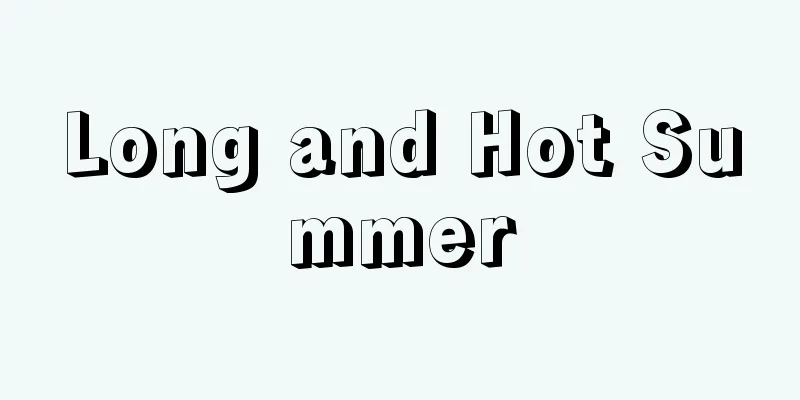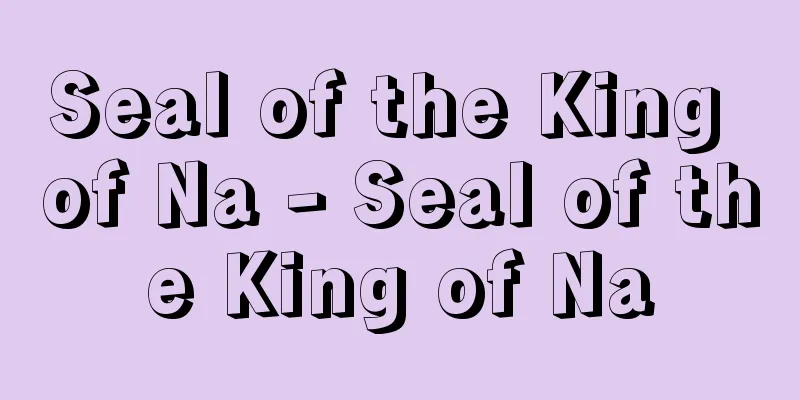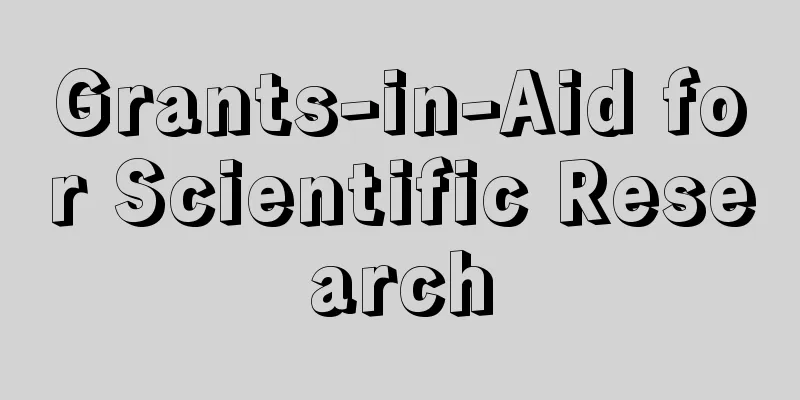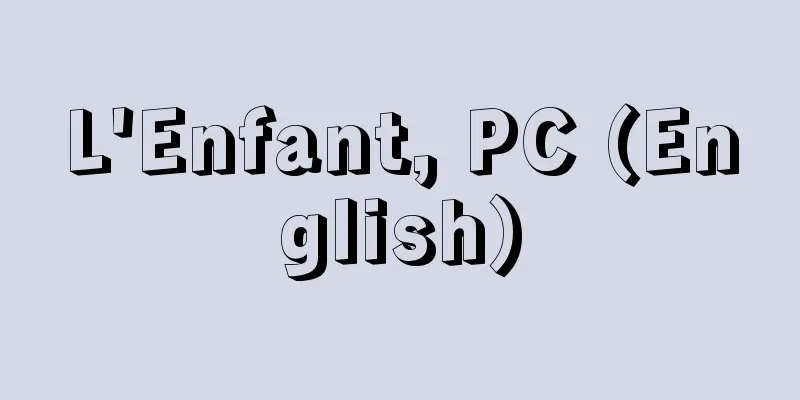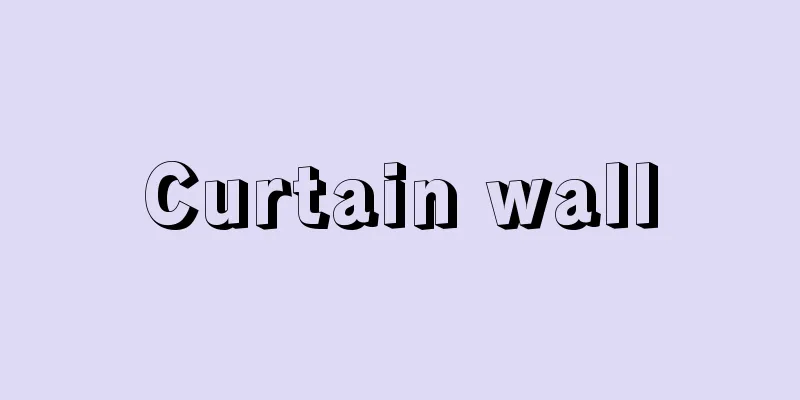Textbook Trial
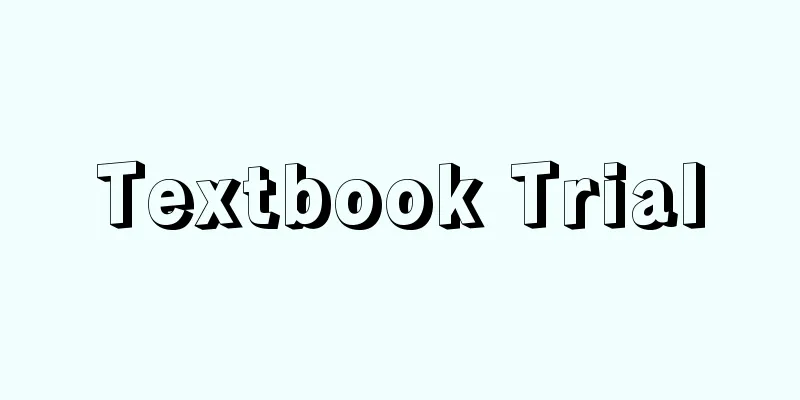
|
In a broad sense, it refers to the lawsuits that were filed over the textbook system, including the textbook certification system, the mandatory textbook use system, and the free textbook system, but it usually refers to a series of lawsuits filed by the historian Ienaga Saburo (1913-2002) who argued that the certification system was unconstitutional and illegal. [Shuichi Miyazaki] Ienaga Textbook TrialIenaga Saburo, who was a professor at Tokyo University of Education and later at Chuo University (at the time the lawsuit was filed), was dissatisfied with the fact that his high school Japanese history textbook, "New Japanese History," had been given a conditional pass or failed the screening process. He argued that the textbook screening system was in violation of the freedom of expression, the prohibition of censorship, and academic freedom guaranteed by the Constitution, and filed a lawsuit against the government and others in this case, which lasted for over 30 years. "Shin Nihonshi" had been written, compiled, and used since the 1950s, but when it was submitted for certification (for the academic years 1962 and 1963) following the revision of the high school curriculum guidelines in 1960 (Showa 35), it was either rejected or conditionally passed (it was later, reluctantly, revised and passed, and published as the 5th edition). The first lawsuit (filed in June 1965) sought compensation from the state in response to this. The second lawsuit (filed in June 1967) was an administrative lawsuit seeking the annulment of a 1966 application for partial revision, which had been unjustly rejected because parts that had been revised in accordance with the advisory opinion of B (at the time) during the inspection of the 5th edition had been reverted to the original wording. The third lawsuit (filed in January 1984) was a claim for state compensation brought against the conditional passing of applications for certification of "New Japanese History," which had been completely rewritten in line with the revision of the high school curriculum guidelines in 1978 (new in 1980, partially revised in 1983, etc.) amid new circumstances surrounding the certification of social studies textbooks, such as the so-called "invasion" and "advancement" issues and the publication of the textbook "New Japanese History" by the "National Conference to Protect Japan." [Shuichi Miyazaki] Second LawsuitThe ruling was made earlier on the second administrative lawsuit. The Tokyo District Court ruling (hereafter referred to as the "Sugimoto ruling" after the name of the presiding judge) presented a full-scale constitutional interpretation of the nation's freedom of education and children's right to learn, and while it denied the unconstitutionality of the certification system itself, it also ruled that the application of the system was unconstitutional, stating in the summary of the ruling that "the decision to fail the certification in this case involved a prior review of the ideological content of the author's academic research, which constitutes censorship prohibited by Article 21, paragraph 2 of the Constitution, and that it violated Article 10 of the Fundamental Law of Education as an "undue control" over education, not just in terms of typos and errors in textbooks, but also in terms of interference with the validity of the content of the textbooks" (July 17, 1970). The Tokyo High Court's second instance ruling (the "Azegami ruling") avoided a constitutional decision, but upheld the original ruling on the grounds that the failure to pass the exam had been an abuse of discretion, and dismissed the Minister of Education's appeal (December 20, 1975). The Supreme Court (First Petty Bench), which heard the appeal, ruled that, in principle, the plaintiff's interest in the lawsuit had disappeared at this point in time, when the certification examination standards had changed in conjunction with the revision of the curriculum guidelines, and set aside the original ruling and remanded the case to the Tokyo High Court for review on whether the case was an exceptional case in which the interest in the lawsuit still existed (the "Nakamura ruling", April 8, 1982). The court on remand ruled that because the changes between the old and new curriculum guidelines were not insignificant, even if the disqualification decision in this case was overturned, the plaintiff would not be able to take the revised examination again under the old curriculum guidelines, and that the fact that the disqualification would allow the textbooks to be used as supplementary teaching materials was merely a de facto benefit ("Tanno Judgment," June 27, 1989). As a result, the suit of the plaintiff, Ienaga, was dismissed, but as the plaintiff did not appeal again, the second lawsuit was closed. [Shuichi Miyazaki] First lawsuitThe first lawsuit was decided by the Tokyo District Court (the "Takatsu decision") four years after the "Sugimoto decision." This decision found eight unfair examination opinions in the 1963 (Showa 38) examination, which it deemed illegal, and ultimately granted a portion of the claim for damages (100,000 yen). However, in contrast to the Sugimoto decision, which recognized the "national right to education," this decision upheld the current examination system as constitutional and legal (July 16, 1974) based on the theory of the "state's right to education" based on the welfare state view. In 1986, the Tokyo High Court's appeals court decision on this matter stated that "it should be understood that the involvement or intervention of the state that is deemed necessary and reasonable is approved, even in relation to the content or methods of education," and, like the Takatsu decision, fully upheld the current textbook screening system. As for the illegality of individual screening opinions, the court also overturned the portion of the first instance ruling in favor of the plaintiffs, stating that there was no violation of or abuse of discretion "as long as there is a reasonable basis for the factual circumstances or views on which the opinions are based" (March 19, "Suzuki decision"). In 1993, 28 years after the plaintiffs filed the lawsuit, the Supreme Court's Third Petty Bench issued its first substantive ruling on the conformity of the textbook certification system with the Constitution and other related laws (the "Kabe ruling" of March 16). Like the lower court rulings, this ruling recognized the constitutionality and legality of the textbook certification system in relation to the "freedom of education" in Article 26 of the Constitution and Article 10 of the Fundamental Law of Education (as it was then), from the perspective of the need to ensure accuracy, neutrality, and fairness in educational content and maintain national standards, which are required due to the lack of ability of children and students to criticize lessons and the limited room for choosing schools and teachers. In addition, the ruling found Article 21 of the Constitution, "freedom of the press, prohibition of censorship," to be constitutional and legal, citing the fact that books that failed the screening process could be published as general books. Regarding the Minister of Education's discretion in deciding on the examination, the court stated that "it is an academic, educational, specialized technical judgment," but that if there is an "unacceptable error in the content of the manuscript or in the understanding of the academic and educational situation at the time of the examination that should serve as the basis for pointing out defects," then it becomes illegal.After setting out the standard for illegality due to the abuse of discretion, the court found that no illegality existed in this case and dismissed Ienaga's appeal. [Shuichi Miyazaki] The third lawsuitAround the time that the first lawsuit ended with a complete defeat for the plaintiff, Ienaga, the third lawsuit, which also sought state compensation, began. Whereas the first lawsuit contested the illegality of 300 examination results, the third lawsuit narrowed its focus to the illegality of eight examination opinions in 1980 and 1983, and the refusal to accept applications for corrections in 1982. The lawsuit attracted social attention, with on-site questioning being conducted in Okinawa regarding the description of the Battle of Okinawa at the end of the Pacific War. The Tokyo District Court's first instance ruling was handed down in 1989 (Heisei 1) (October 3rd, "Kato ruling"), the same year as the "Tanno ruling" on the appeal in the second lawsuit. While the ruling found the certification system itself to be constitutional and legal, it also gave specific criteria for determining whether the certification authority had exceeded or abused discretion, such as "when the judgment in the certification disposition...lacks a factual basis due to a misunderstanding of the academic situation, etc." However, the only place where the court found an abuse of discretion in the certification in this case was in a single reference to the "Soumoutai" (Grassroots Corps) from the late Edo period, and it only ordered the defendant, the government, to pay 100,000 yen in damages. The appellate court ruling of October 20, 1993 (the "Kawakami ruling") was largely in line with the "Kabe ruling" of the first appeal court in the same year in terms of the constitutionality and legality of the certification system. However, the court recognized an abuse of discretion in the certification of three locations, including two locations related to the so-called "Nanjing Massacre," and awarded the government 300,000 yen in compensation in partial victory for the plaintiffs. On August 29, 1997, the Supreme Court's Third Petty Bench handed down the final ruling in the Ienaga Textbook Trial (the "Ohno ruling"). The ruling rejected the appellant Ienaga's argument that the certification system was unconstitutional, and also followed the Kabe ruling's standard of "intolerable error" in determining the abuse of discretion, but interpreted the Minister of Education's discretion more narrowly, stating that "not only must the content of the revision opinion be reasonable, but it must also be to the extent that the textbook is deemed inappropriate unless the defects in the manuscript are corrected, deleted, or added." In its ruling on individual sections of the textbook screening, the court acknowledged the illegality of the revision opinion regarding the "Unit 731," which was involved in the development of wartime biological weapons, and set the amount of compensation for the four screening irregularities, including the three that were confirmed in the appeal court, at 400,000 yen. The Ienaga Textbook Trial, which has been going on for 32 years since it was first filed, has played a role in raising interest in education policy, including the textbook system, among all segments of the public, and in deepening the theory of the right to education. Furthermore, the fact that the textbook screening regulations and screening standards have been revised several times is said to be an achievement of this trial. [Shuichi Miyazaki] Yokohama Textbook TrialThe plaintiff, Takashima Nobuyoshi (1942-, former professor at the University of the Ryukyus), co-wrote a modern society textbook for high school civics when he was a teacher at the University of Tsukuba High School. In 1992, he was given a review opinion (equivalent to a revision opinion under the old review system) for over a dozen passages on the two themes he was responsible for, "Modern Mass Media and Us" and "Japan in Asia," forcing him to give up writing. As a result, in the following year of 1993, he filed a lawsuit for state compensation, alleging the illegality of the review, which was called the second textbook trial after the Ienaga textbook lawsuit. This lawsuit also attracted attention as the first judicial decision on a review after the drastic simplification and emphasis on review procedures and standards in 1989 (Heisei 1) following the report of the Provisional Council for Education. The first instance judgment was handed down on April 22, 1998, by the Yokohama District Court, and partially upheld the plaintiff's claim. The court found that the Minister of Education had exceeded his discretionary power and made "serious errors" in two areas of the examination opinion on "Japan in Asia": (1) the way in which citations were made to consider "perspectives on Asia" from Fukuzawa Yukichi's "Datsu-A-ron" and Katsu Kaishu's "Hikawa Seiwa," and (2) the issue of whether the opinions of Southeast Asian countries should have been heard when the Maritime Self-Defense Force dispatched minesweepers during the Gulf War. The court also found that the Minister's examination opinion had insufficient understanding of the academic situation, and that there had been a lack of clarity in the reasons for the examination and a restrained attitude in interpreting the discretionary standards. The court also found that the Minister's examination opinion had violated his discretionary power and made "serious errors" in two areas: (1) the way in which citations were made to consider "perspectives on Asia" from Fukuzawa Yukichi's "Datsu-A-ron" and Katsu Kaishu's "Hikawa Seiwa," and (2) the issue of whether the opinions of Southeast Asian countries should have been heard when the Maritime Self-Defense Force dispatched minesweepers during the Gulf War. The court also found that the Minister's examination opinion had violated his discretionary power and made "serious errors" in two areas: (1) the way in which citations were made to consider "perspectives on Asia" from Fukuzawa Yukichi's "Datsu-A-ron" and Katsu Kaishu's "Hikawa Seiwa," and However, on May 29, 2002, the Tokyo High Court dismissed the plaintiff's claim in the appeal hearing, stating that there was no abuse of discretion in any of the four examination opinions, including the two that the original ruling had found to be illegal. Then, on December 1, 2005, the First Petty Bench of the Supreme Court also dismissed the appeal by plaintiff Takashima. [Shuichi Miyazaki] Okinawa mass suicide and military involvement trialDuring the screening of Japanese history textbooks for high schools in 2006, a new issue arose in relation to the Battle of Okinawa at the end of the Pacific War, which called for the deletion or revision of previous descriptions that stated that mass suicides were by "military order." It was determined that this issue was closely related to a lawsuit that had been filed the previous year in 2005. In August 2005, a group of former combat commanders filed a lawsuit against the author and publisher, seeking an injunction against publication and damages, alleging that the content of books such as "Okinawa Notes" (Iwanami Shinsho, first published in 1970) written by Kenzaburo Oe, which states that residents committed mass suicides under the orders of the Japanese military during the Battle of Okinawa, is false. The plaintiffs' and former combat commanders' statements in the lawsuit that they had not received orders to commit suicide were used as part of the basis for the examination opinion, but after receiving strong criticism from Okinawans and others about the examination, the Ministry of Education, Culture, Sports, Science and Technology filed a correction request to acknowledge the "involvement of the military in the mass suicides." In the end, the Osaka District Court's ruling at first instance acknowledged the authenticity of the writings of Oe and others, dismissing the claims of the former commanders (March 28, 2008). The Osaka High Court also dismissed the plaintiffs' appeal on October 31, 2008. [Shuichi Miyazaki] Other textbook-related lawsuitsOther representative cases involving textbooks other than those related to textbook screening include the lawsuit demanding free textbooks for compulsory education and the Denshukan case, which involved a dispute over the obligation to use textbooks. [Shuichi Miyazaki] Trial demanding free compulsory education textbooksIn this case, before the introduction of a system of free textbooks at compulsory education schools in 1964 (Showa 39) through legislative measures, the question was whether the latter part of Article 26, Paragraph 2 of the Constitution, which states "compulsory education shall be free," included the cost of textbooks as a free item. The Supreme Court (Grand Bench) ruling of February 26, 1964 stated that the only thing that could be free under the Constitution was "tuition," and that the cost of textbooks and other items should be "a matter of legislative policy, taking into consideration the financial and other circumstances of the nation." [Shuichi Miyazaki] Denshukan High School TrialIn the Denshukan case, three social studies teachers at Fukuoka Prefectural Denshukan High School were dismissed for "biased teaching," including violating the obligation to use textbooks for each subject they taught (Article 21, Paragraph 1, and Article 51 of the School Education Act at the time). They then filed a lawsuit seeking the reversal of their dismissal. The Fukuoka District Court's first-instance ruling on July 28, 1978, took a limited view of the nature of textbooks, stating that "the obligation to use textbooks as the central teaching material among various teaching materials cannot be affirmed, and the way in which textbooks are taught and the weighting of their use in comparison with supplementary teaching materials are left to the freedom of the teacher's teaching method." Based on this, the court broadly interpreted the manner and form of fulfilling the obligation to use textbooks, stating that whether or not a textbook was used as teaching material should be judged "in a comprehensive consideration of the educational activities over a one-year period of the subject in question," and that "even if, in a certain class period, a lecture other than the textbook content was held... or research books and materials other than the textbook were used as teaching materials... and educational activities equivalent to the textbook content were conducted, it is unreasonable to view this alone as a violation of the obligation to use textbooks." In response to this, the Fukuoka High Court's second instance ruling of December 24, 1983 stated that the "proper use" of textbooks should be "that students should bring the textbook to class and, in principle, teach the entire content in accordance with the textbook," but also stated that "teachers are also permitted to teach using opposing theories from an academic standpoint or other teaching materials, as appropriate, in accordance with the objectives and content of the subjects and courses in the curriculum guidelines at issue." In response to the plaintiffs' claims, the first and second instance rulings found that the defendant, the Fukuoka Prefectural Board of Education, had abused its discretion in its disciplinary actions against the two teachers, and ordered the disciplinary actions to be set aside. However, the appellate court ruling on January 18, 1990 broadly interpreted the discretion of the disciplinary authority and overturned the original ruling. [Shuichi Miyazaki] "The Textbook Trial by Ienaga Saburo (1981, Nippon Hyoronsha)" ▽ "The Ienaga Textbook Trial, edited by the Ienaga Textbook Litigation Defense Team (1998, Nippon Hyoronsha)" ▽ "This is how the textbooks were rewritten!" by Takashima Nobuyoshi (1994, Kodansha)" ▽ "Textbook Inspection - Thinking from the Perspective of the "Mass Suicides" Issue During the Battle of Okinawa by Ishiyama Hisao (2008, Iwanami Shoten)" [References] | | | |Source: Shogakukan Encyclopedia Nipponica About Encyclopedia Nipponica Information | Legend |
|
広義には、教科書検定制、教科書使用義務制、教科書無償制など教科書制度をめぐって争われた裁判を総称するものだが、通常、歴史学者の家永三郎(いえながさぶろう)(1913―2002)が検定制の違憲・違法性を主張して提起した一連の裁判をさす。 [宮﨑秀一] 家永教科書裁判東京教育大学、のちに中央大学教授(出訴当時)であった家永三郎が、自著の高等学校日本史教科書『新日本史』の検定不合格処分や条件付き合格処分を不服として、教科書検定制度は憲法の保障する表現の自由、検閲の禁止、学問の自由などに反すると主張し、国などを相手どって提訴し30余年にわたって行われた裁判。 『新日本史』はすでに1950年代から執筆・編纂(へんさん)され使用されていたが、1960年(昭和35)の高等学校学習指導要領改訂に伴う検定申請(1962年度および1963年度)に対して検定不合格処分および条件付き合格処分(その後不本意ながら再修正して合格し、5訂版として発行)が下された。これに対する国家賠償請求事件が第一次訴訟(1965年6月提訴)である。 第二次訴訟(1967年6月提訴)は、1966年(昭和41)の部分改訂申請が、5訂版検定の際に助言的性格のB意見(当時)に沿って修正した箇所をもとの記述に戻したことを理由に不合格とされたのを不当として、その取消しを求めた行政訴訟である。 第三次訴訟(1984年1月提訴)は、いわゆる「侵略」「進出」問題、「日本を守る国民会議」による教科書『新編日本史』発行など社会科教科書検定を巡る新たな状況のなかで、1978年の高等学校学習指導要領改訂に伴い全面的に書き改めた『新日本史』の検定申請(1980年度新規、1983年度部分改訂など)に対する条件付き合格処分等について提起した国家賠償請求事件である。 [宮﨑秀一] 第二次訴訟判決は先に行政事件訴訟である第二次訴訟について下された。第一審東京地裁判決(裁判長名を冠して通称「杉本判決」とよぶ。以下同様)は、国民の教育の自由や子供の学習権に関して本格的な憲法解釈を展開し、検定制自体の違憲性は否定したものの、「本件検定不合格処分は、執筆者の学問研究の成果としての思想内容を事前審査するものであって憲法第21条2項が禁ずる『検閲』に該当し、また教科書の誤記、誤植などにとどまらず記述内容の当否に介入する点で、教育への『不当な支配』として教育基本法第10条に違反する」(判決要旨)と、いわゆる運用違憲の判断を示した(1970年7月17日)。 第二審東京高裁判決(「畔上(あぜがみ)判決」)は、憲法判断は回避したが、本件不合格処分には裁量権の濫用があったとの理由で原判決を維持し、文部大臣の控訴を棄却した(1975年12月20日)。上告を受けた最高裁(第一小法廷)は、学習指導要領改訂に伴い検定審査基準も変更された現時点では、原則として原告の訴えの利益は消滅していると判示したうえで、本件がなお例外的に訴えの利益の存続する場合に相当するか等を審理すべく原判決を破棄し、東京高裁に差し戻す判決を言い渡した(「中村判決」1982年4月8日)。 差戻審判決は、新旧学習指導要領の変動は微小とはいえないから、本件検定不合格処分が取消されても、原告が再度旧指導要領下で改訂検定を受けることはできず、また処分取消しにより副教材として使用可能となることは事実上の利益に過ぎないと判断した(「丹野判決」1989年6月27日)。これにより、原告・家永側の訴えは却下されたが、再上告しなかった結果、第二次訴訟は終結した。 [宮﨑秀一] 第一次訴訟第一次訴訟は第一審東京地裁判決(「高津(たかつ)判決」)が「杉本判決」から4年遅れて下された。本判決は、1963年度(昭和38)検定に8か所の不当な検定意見をみいだし、これを違法として結果的には損害賠償請求を一部(10万円)認容したが、「国民の教育権」を認めた杉本判決とは対照的に、福祉国家観に基づき「国家の教育権」説にたって、現行検定制を合憲合法とした(1974年7月16日)。 これに対する東京高裁控訴審判決は、1986年、国の教育統制権能について「国が必要かつ合理的と認められる関与ないし介入をすることは、教育の内容、方法に関するものであっても是認されると解すべき」と述べて、高津判決と同様に現行教科書検定制度を全面肯定した。個々の検定意見の違法性についても、「(当該意見の)基礎たる事実関係ないしその見解に相応の根拠がある限り」裁量の逸脱や濫用の違法はないとして、一審判決の原告勝訴部分を取り消した(3月19日「鈴木判決」)。 最高裁第三小法廷は、原告提訴以来28年を経た1993年(平成5)、教科書検定制度の憲法その他関連法規適合性について、初の実体的判断を示した(3月16日「可部判決」)。同判決は下級審判決と同じく、憲法第26条・教育基本法第10条(当時)の「教育の自由」との関連では、児童・生徒の授業批判能力の欠如や学校・教師選択の余地の乏しさから要請される、教育内容の正確・中立・公平さと全国的水準の保持の必要性の観点から、検定制の合憲・合法性を認めた。また、憲法第21条「出版の自由、検閲の禁止」については、不合格図書を一般図書として発行可能であることを根拠にあげ合憲、合法とした。そして検定処分における文部大臣の裁量権については、「学術的、教育的な専門技術的判断である」が、その過程に「原稿の記述内容又は欠陥の指摘の根拠となるべき検定当時の学説状況、教育状況についての認識……に看過ごし難い過誤」がある場合は違法となると述べ、裁量権濫用による違法性の基準を示した上で、本件にその違法はないとして家永側の上告を棄却した。 [宮﨑秀一] 第三次訴訟第一次訴訟が、原告・家永側の全面敗訴で終結したのと前後して、同じく国家賠償請求型の第三次訴訟が進行した。三次訴訟では、一次訴訟が300か所もの検定結果の違法性を争ったのに対し、1980年度(昭和55)と1983年度の検定意見8か所と、1982年度の正誤訂正申請不受理の違法性に争点が絞られた。太平洋戦争末期の沖縄戦の記述をめぐっては、現地沖縄での出張尋問が行われるなど本訴訟への社会的注目が集まった。 東京地裁による第一審判決は、二次訴訟差戻控訴審の「丹野判決」と同年の1989年(平成1)に下された(10月3日「加藤判決」)。判決は検定制自体は合憲、合法としつつも、検定権行使の際の裁量権逸脱、濫用の認定基準として、「検定処分における判断が、……学界の状況等に誤認があることなどにより事実の基礎を欠く場合」など具体的に示した。しかし、本件検定につき裁量権濫用が認定されたのは、幕末期の「草莽隊(そうもうたい)」の記述1か所のみで、被告・国には10万円の損害賠償が命ぜられるにとどまった。 1993年10月20日の、控訴審判決(「川上判決」)は、検定制の合憲性・合法性判断については同年の一次訴訟上告審「可部判決」にほぼ沿ったものであったが、新たにいわゆる「南京(ナンキン)大虐殺」に関連する2か所を加えた計3か所の検定に裁量権濫用を認め、国に30万円の賠償を命じる原告一部勝訴判決となった。 1997年8月29日、家永教科書裁判最後の判決が最高裁第三小法廷によって下された(「大野判決」)。判決は上告人家永側の検定制違憲の主張をしりぞけ、また裁量権濫用判断についても可部判決の「看過ごし難い過誤」の基準を踏襲したが、文部大臣の裁量権についてはより限定的に解し、「修正意見の内容が合理的であるのみならず、原稿記述の欠陥が訂正、削除又は追加されない限り教科書として不適切であると評価せざるを得ない程度に達していることを要する」とした。個別の検定箇所に対する判断では、新たに戦時中の細菌兵器開発に関する「七三一部隊」の記述に対する修正意見の違法性を認定し、控訴審で確定した3か所と合わせた計4か所の検定違法に対する賠償額を40万円とした。 提訴から32年にわたる家永教科書裁判は、国民各層に教科書制度を含め広く教育政策への関心を喚起するとともに、教育権理論を深化させる役割を果たした。また数次にわたって教科書検定規則および検定基準の改訂が行われたことは、同裁判の成果と評される。 [宮﨑秀一] 横浜教科書裁判原告の高嶋伸欣(のぶよし)(1942― 、元琉球大学教授)は、筑波大学附属高等学校教諭当時、高等学校公民科現代社会の教科書を共同執筆した。その際担当した「現代のマスコミと私たち」と「アジアの中の日本」の二つのテーマに関する記述計十数か所について、1992年に検定意見(旧検定制度の修正意見に相当)を付され、執筆断念に追い込まれた。そのため翌1993年検定の違法性を主張して国家賠償請求訴訟を提起、これは家永教科書訴訟に次ぐ第二の教科書裁判とよばれた。本訴訟は、臨時教育審議会答申を受けた1989年(平成1)の検定手続・基準の大幅簡素化・重点化後の検定に対する初の司法判断としても注目された。 第一審判決は、1998年4月22日横浜地方裁判所で言渡され、原告の請求を一部認容した。「アジアの中の日本」に関する検定意見のうち、(1)福沢諭吉の「脱亜論」と勝海舟の『氷川清話(ひかわせいわ)』からの「アジアに対する見方」を考察するための引用の仕方、(2)湾岸戦争時の海上自衛隊の掃海艇派遣に際して東南アジア諸国の意見を聞くべきかどうかの論点、の2か所について、学説状況の把握が不十分であり、検定理由の明確性と裁量基準解釈における抑制的姿勢を欠く等の点で「看過ごし難い過誤」があったとして文部大臣の裁量権逸脱による違法性を認定、20万円の損害賠償を命じた。 しかし、2002年5月29日、控訴審で東京高裁は、原判決が違法と認定した2か所を含め検定意見4か所すべてに裁量権の逸脱などはないとして原告の請求を棄却、続いて2005年12月1日、最高裁第一小法廷も原告高嶋側の上告を棄却した。 [宮﨑秀一] 沖縄集団自決・軍関与裁判2006年度の高校日本史教科書の検定において、太平洋戦争末期の沖縄戦に関連して、集団自決が「軍命」によるものだとする従来の記述の削除・修正が求められる新たな問題が浮上し、前年2005年に提訴された裁判がこれと密接に関わるとされた。 大江健三郎著『沖縄ノート』(岩波新書、1970年初版)などのなかで、沖縄戦において住民が日本軍の命令により集団自決に至ったと書かれた内容は事実に反するとして、2005年8月、当時の戦闘隊長らが著者や出版社に対し出版差し止めや損害賠償等を求め、訴えを提起した。同裁判における原告・元戦闘隊長らの自決命令はなかった旨の陳述が検定意見の根拠の一部とされたが、本検定に対する沖縄県民等の強い批判を受け、文部科学省は訂正申請の形で「集団自決への軍の関与」を認めるに至った。結局、裁判においても一審大阪地裁判決は大江らの著述の真実相当性を認定し、元隊長側の請求を棄却した(2008年3月28日)。原告側の控訴に対し大阪高裁も同2008年10月31日これを棄却している。 [宮﨑秀一] その他の教科書関連裁判教科書検定関連裁判以外で教科書に関わる代表的裁判としては、義務教育教科書無償要求事件訴訟と教科書使用義務について争われた伝習館事件訴訟があげられる。 [宮﨑秀一] 義務教育教科書無償要求裁判この裁判では、立法措置により1964年度(昭和39)から義務教育学校での教科書無償制が発足する以前に、憲法第26条2項後段「義務教育は、これを無償とする」の解釈として、教科書費も無償の範囲に含まれるか否かが問われた。1964年2月26日の最高裁(大法廷)判決は、憲法上無償の対象となるのは「授業料」までにとどまり、教科書等の費用については「国の財政等の事情を考慮して立法政策の問題」とすべきであると述べた。 [宮﨑秀一] 伝習館高校裁判伝習館事件は、福岡県立伝習館高校の社会科教師3名が、各担当科目につき教科書を使用する義務(当時の学校教育法21条1項、51条)に違反するなど「偏向教育」を行ったとして、懲戒免職処分を受け、その取消しを求めて提訴したものである。一審の福岡地裁1978年7月28日判決は、教科書を「諸教材の中で中心的教材として使用する義務を肯定することはできず、教科書の教え方や補助教材との使用上の比重等は教師の教育方法の自由に委ねられている」として、教科書の性格を限定的にとらえた。その上で、教科書を教材として使用したか否かは「当該科目の1年間にわたる教育活動にわたる全体的考察において」判断されるべきであり、「或る授業時間のみを把えれば教科書内容以外の講義……や教科書以外の研究書や資料を教材とし……教科書内容に相当する教育活動が行われたとしても、それのみを目して教科書使用義務違反とみるのは非常識である」として、教科書使用義務履行のあり方・形態を広く解釈した。 これに対し、二審の福岡高裁1983年12月24日判決は、教科書の「あるべき使用形態」を、「授業に教科書を持参させ、原則としてその内容の全部について教科書に対応して授業すること」とする一方で、「教師において、適宜、本件学習指導要領の教科、科目の目標および内容に従って、教科書を直接使用することなく、学問的見地に立った反対説や他の教材を用いての授業をすることも許される」とも述べている。 原告らの請求に対し、一・二審判決は教師2名の処分について、被告の福岡県教育委員会側に裁量権逸脱の違法性を認め、処分取消を言渡したが、1990年(平成2)1月18日の上告審判決は、処分権者の裁量権を広く解し、原判決を破棄した。 [宮﨑秀一] 『家永三郎著『教科書裁判』(1981・日本評論社)』▽『家永教科書訴訟弁護団編『家永教科書裁判』(1998・日本評論社)』▽『高嶋伸欣著『教科書はこう書き直された!』(1994・講談社)』▽『石山久男著『教科書検定――沖縄戦「集団自決」問題から考える』(2008・岩波書店)』 [参照項目] | | | |出典 小学館 日本大百科全書(ニッポニカ)日本大百科全書(ニッポニカ)について 情報 | 凡例 |
<<: Kyogase [village] - Kyogase
>>: Textbook Certification System - Authorization of textbooks
Recommend
Hongoza
This theater was located in Harukicho, Hongo, Toky...
West Virginia
W.Va. is a mining state in the central eastern Uni...
capitania
…The first islands in the Atlantic were discovere...
place kick
…You cannot aim directly at the goal. Place kick:...
Florentinus, T. (English spelling) FlorentinusT
…The first human dissection in the Middle Ages is...
Ibn Muhalhir - Ibn Muhalhir
…Years of birth and death unknown. Also known as ...
Cowell, PH - Cowell
…He later worked on calculating the orbits and po...
check
〘noun〙 (check)① A check. ※Western Travel Guide (18...
Pressure type liquid level gauge
...There is also a gauge glass in which the liqui...
Seven Years' War (English)
A war between Austria and Prussia from 1756 to 17...
Crowding effect
…In general, population density affects the numbe...
Basic oxide - Basic oxide
This refers to oxides that are basic, and general...
Picture wife - Esu-gata Nyobo
A folk tale. A marriage tale with the theme of fa...
Cut out (signboard) - Cut out
...His career as a story editor at 20th Century F...
Price leadership
When there is an oligopolistic market structure, a...
